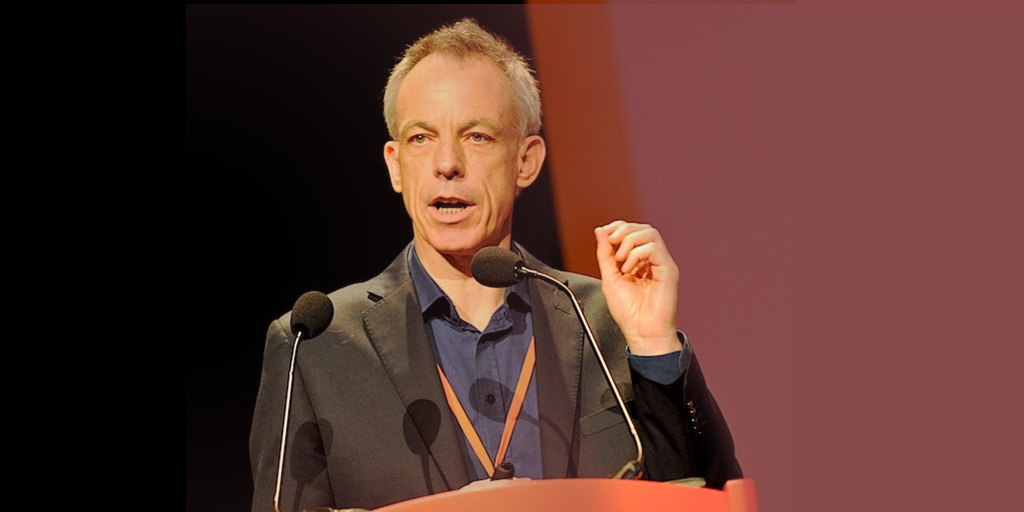
Five Questions with DMD Researcher Matthew Wood
By Jeanene Swanson | Wednesday, October 23, 2019
Matthew Wood, PhD, professor of Neuroscience at the University of Oxford and director of both the Oxford Rare Disease Center and the MDUK Oxford Neuromuscular Center, was awarded an MDA research grant totaling $210,000 over two years to optimize the delivery of genetic therapies such as oligonucleotides to tissues for treating Duchenne muscular dystrophy (DMD).

Dr. Matthew Wood
DMD is a genetic disease caused by a mutation in the dystrophin gene on the X chromosome that results in little or no production of dystrophin, an essential protein for keeping muscle cells intact. In September 2016, Sarepta Therapeutics’ Exondys 51 was the first gene therapy approved to treat DMD (it is an exon-skipping drug). The delivery of these types of therapies into the right tissues remains challenging, however, and Dr. Wood’s team has addressed this by developing a range of gene-delivery technologies, including peptides and nanotechnologies.
In gene-replacement therapy, adeno-associated virus (AAV) vectors are used to deliver a normal copy of a missing or mutated gene to a patient’s cells. However, AAVs can cause an immune response, making it impossible to deliver the therapy more than once. With this funding, Dr. Wood will develop a nanotechnology that uses exosomes, naturally occurring nanoparticles that transport proteins and genetic material between cells, to deliver gene therapies to cells potentially without provoking an immune response. The aim is to be able to treat people with pre-existing immunity to AAV as well as be able to administer more than one dose, if needed, to treat DMD over the course of the disease.
Please describe your current research.
One of the technologies that we have developed to dramatically improve the delivery of genetic drugs is a nanotechnology (i.e., a very small technology) based on naturally occurring nanoparticles (as opposed to synthetic nanoparticles) known as exosomes. Exosomes exist naturally and have a natural function in humans and other mammals, which involves the transport and delivery of genetic material between cells in the body. Our technology has captured this exosome system and aims to exploit it for the effective delivery of genetic medicines.
In this project we aim to test the use of exosomes for the delivery of genetic therapy for DMD. In particular, the current approach for doing this is based on the use of viruses known as adeno-associated virus vectors, or AAVs. However, AAVs have a number of drawbacks, one of which is that they are often recognized by the body’s immune system, which prevents or limits their ability to deliver the genetic treatment. In this project we will investigate the use of exosomes as a method to encapsulate or “hide” AAVs from the immune system — so-called “stealth” AAVs — as a new method to help to dramatically improve the way that gene therapy might be delivered to DMD and other patients.
What is the focus of your research in DMD, and why is it important?
We have worked for more than 20 years with a major focus on developing antisense oligonucleotide exon skipping for Duchenne. This has proved challenging not least as the delivery of oligonucleotides into muscle and heart tissues is extremely difficult. We have therefore worked extensively on new methods to dramatically improve the delivery of genetic drugs, such as oligonucleotides and gene therapies into muscle, so that these therapies can ultimately be highly effective. We have developed a range of gene-delivery technologies that are now maturing and ready for clinical application that can achieve this — including the use of peptides and nanotechnologies.
The area of focus is critically important because many muscle and neuromuscular conditions are inherited, like Duchenne, and therefore the ultimate curative therapy will likely be a genetic therapy. However, the delivery of genetic therapies into muscle, heart, and brain (the typically affected tissues) is extremely challenging on account of the nature of the therapy and size of the drug and also on account of the abundance of muscle tissue in the body. New methods and technologies to address this challenge will not only greatly benefit Duchenne patients, but potentially many tens of thousands more who suffer from related inherited neuromuscular conditions.
What inspired you to study DMD?
We have been working on Duchenne for more than 20 years. It is a devastating disease that has a profound impact on all patients and their families. After enormous efforts, we collectively are now on the cusp of having treatments to combat this disease, and we are determined to keep working relentlessly on this until the problem is solved.
What is the expected outcome of your research?
Our hope, and expectation, is that the “stealth” AAV method based on the use of exosomes will allow the delivery of genetic therapy for Duchenne in a way that prevents immune recognition of that therapy, thereby allowing the therapy to administered to all suitable patients, regardless of whether they possess pre-existing immune recognition of AAV, and to be re-administered as necessary should a single dose of gene therapy not be sufficient for lifelong treatment.
How will your research lead to treatments and cures?
This work is critically important as the development of effective treatments for Duchenne and other inherited neuromuscular conditions requires that these therapies are efficiently and safely delivered to the affected tissues in the body. The development of methods that can successfully accomplish this will open the door to very rapid advances in development of gene therapies for a very wide range of neuromuscular conditions.
Why is it important that MDA continue to fund research in DMD?
We are on the cusp of a genetic revolution in the development of gene-based therapies for inherited muscle and neuromuscular conditions. Funding research that can help to maximize the effectiveness of these new therapies will have a major influence on patients and on the broader neuromuscular disease community.
Disclaimer: No content on this site should ever be used as a substitute for direct medical advice from your doctor or other qualified clinician.




